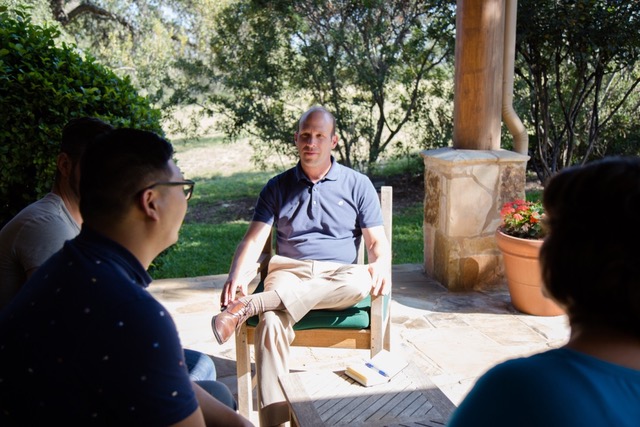
Sustaining motivation in the workplace is one of the biggest challenges that leaders are facing now. Among dozens of leaders I’ve been fortunate to work with over the past year during the Coronavirus pandemic, most of them struggle with how to get the best out of their employees without alienating them in the process. At its core, many leaders mistakenly overlook a secret weapon for building strong, engaged teams; intrinsic motivation.
As leaders, we often adopt a carrot-stick mindset to motivate employees through rewards and punishments. For example, we dangle bonuses such as cash and trips, perks such as free snacks and ping pong), work incentives such as promotions and stock options, or punishments such as exclusion from attractive assignments and threats of termination. These are all external sources of motivation.
While the above methods can be effective to some degree, they are limited in both their staying power and outcomes that can be achieved. In psychobabble terms, we make what’s typically referred to by psychologists as the “fundamental attribution error,” where we assume that people will not be motivated unless we dangle a carrot in front of them or threaten them with a stick.
I’d like to share some strategies so you can avoid solely relying upon the carrot-stick approach while cultivating a broader approach by tapping into intrinsic or “natural” motivation.
How can you tap into natural, intrinsic motivation versus imposing external methods of motivation?
Just over four years ago, I left a great job with a six-figure income at a Fortune 500 company to start my own business, High Five Career Coaching. I gave up a lot for this venture. And no, I didn’t have any clients lined up at the time.
So why would anyone give up all that stability and leave their job for something else?
Well, there were some factors that were driving me in a new direction. One was the long commute back and forth to LA; initially from San Diego and subsequently from Orange County.
But there was another significant factor. I had a desire to express myself in a different way—entrepreneurially. As great as my job was, I had been limited with what I could do within the confines a large, established organization. I had a lot of ideas I wanted to explore and experiment with and certain work such as coaching that I wanted to focus on more. This was a source of internal motivation—a strong drive to have greater influence and creative control over my future path. I was deeply internally motivated to make a change.
Of course, I had fears. A lot of people let fear hold them back, so they feel trapped in jobs where they are miserable. They just put up with it.
That’s an important lesson for leaders. If you’re using the carrot-stick approach with fear as a motivator, you might get compliance, but you’re not going to win the hearts and minds of your best employees. What if you could tap into their hearts and minds, getting their full engagement and discretionary effort? Imagine the outcomes you could achieve and the impact you could have!
Intrinsic motivation is a powerful thing when you can help employees align more with what is naturally reinforcing and rewarding for them. After wrapping up with one previously disengaged coaching client several months ago, this client told me, “Mike, I actually look forward to Mondays now.”
What if your team looked forward to Mondays?
Here are a few strategies for understanding and approaching motivation in a different, more effective and sustainable way.
1. Assess Payoff Probability
We are always consciously or subconsciously performing a payoff probability calculation. That is, the relationship between our efforts to likely outcomes for investing that effort.
Victor Vroom, a noted business professor from Yale, calls it “expectancy theory.” For example, I once had a client working with a direct report who needed to be on time. Timeliness comes up in a lot of teams, especially at places with flexible schedules. This team member was most likely calculating the payoff probability in their head. If they are late to work and face no negative consequences (at least in their mind), then they may prioritize sleeping in or running errands before heading into work. For them, that is a positive payoff.
Aside from a traditional carrot-stick approach, how might you create a culture of accountability that intrinsically appeals to something they value such as a sense of belonging, pride, integrity, vanity, or achievement?
2. Understanding Locus of Control
Last year, I attended the California Human Resources Conference and heard a great presentation by Carol Quinn, CEO of Hire Authority, who was talking about motivation within the context of hiring people. She brought up the concept of locus of control, initially developed and introduced by psychologist Julian Rotter while at Ohio State University.
One’s locus of control is the degree to which individuals believe they have control over the outcomes of events in their lives. People either have an internal locus of control or an external locus of control.
If we believe our actions will lead to a certain outcome, then we view that we internally have a sense of power and control over our life. This constitutes an internal locus of control. We naturally become more likely to take action, and we are more motivated.
Conversely, if we do not expect our actions to lead to a certain outcome, this would be evidence of an external locus of control. We are therefore more likely to feel helpless and assume a victim mentality. We think: “Why bother? It’s not going to make a difference.” When we feel we have no influence, it’s only natural for one to be less inclined to take necessary actions to achieve one’s goals. This leads to a self-perpetuating cycle with leaders who believe the employees won’t take action unless they are somehow coerced or forced to do so.
As a leader, if you can empower employees with the necessary autonomy for a greater sense of control, then you can tap into one of the most powerful sources of motivation.
3. Seek Clarity, Care, and Connection
Do you know what your employees really care about? For some people, it’s not a big deal to make more money. Beyond a certain point, it’s not much a motivator once their survival needs have been met. As a leader, you have to learn what people care about intrinsically. What is motivating them at work?
Daniel Pink, author of Drive: The Surprising Truth about What Motivates Us, offers up a theory of motivation that asks – To what extent does one have a sense of mastery, autonomy, and purpose? Let’s take a closer look at what leaders can do.
Mastery – To what extent can you provide resources and develop your people? Training, coaching, and mentoring are all tools that help enable employees to build sense of mastery.
Autonomy – To what extent do your people feel free to work on their own without being micromanaged? Providing employees with an overarching goal and empowering them by letting them decide how they wish to achieve it feeds greater freedom and autonomy.
Purpose – To what extent does the work matter to the organization, team, and your employees? Providing employees with greater context helps them understand how their work fits into the bigger picture and can inspire to connect with a higher calling or purpose that is motivating to them.
If you can help employees answer some of these questions, you can begin taking positive steps for helping them tap into their existing motivation.
4. Model the Way to Inspire
The actions (and inactions) of leaders influence the behavior of employees and teams within organizations both positively and negatively. James Kouzes and Barry Posner, authors of The Leadership Challenge, assert the principle of Modeling the Way as one of the top five competencies leaders can develop to inspire greater engagement and performance from employees. It isn’t because of extra money, free snacks, or extra perks. It will be because they were inspired.
Employees pick up on leader habits and behaviors, and consciously and subconsciously strive to follow their example and adopt them for themselves. Therefore, when leaders treat people poorly and abuse their power, many impressionable employees will follow suit because they will learn that it’s acceptable and even expected behavior. That’s why positive role modeling is such an essential tool for inspiring and influencing others.
5. Tend to Environmental Conditions
Can you create an organizational culture with a structure and environment that releases the natural motivation of employees? There are numerous things in the work environment that can either motivate or de-motivate employees. A noted psychologist, Frederick Hertzberg, did studies on what he referred to as “hygiene” factors. These are daily conditions in one’s work environment that are either satisfying or dissatisfying and can affect employee motivation.
Environmental de-motivators can take different forms. Maybe there aren’t proper tools and sufficient resources available to do their jobs, the boss routinely takes credit for employee ideas, or department policies restrict the ability of employees come and go as they see fit for carrying out their daily responsibilities. Conversely, factors in the work environment can be intrinsically motivating. For example, an organization’s office layout can encourage informal conversations and collaboration among employees, achievements may be a routinely recognized and celebrated, and the company may offer valuable professional learning and growth opportunities.
Conclusion
Taking the time to understand limitations of traditional carrot-stick motivation while exploring the possibilities of tapping into more intrinsic forms of motivation better positions leaders to engage and motivate their workforce, especially during challenging times. A great place to start is by having a sincere dialogue with your employees so you can learn more about what motivates them individually and collectively as a team – without all the guess work. Then you can start putting a comprehensive plan together.
How will you create a culture where people feel engaged and motivated to do their best work?
Want to improve motivation and morale at your workplace? I would love to partner with you. Learn more about executive coaching and consulting to support you and your organization. Book a complimentary strategy session for us to explore your options.
About the Author
Mike Gellman is a seasoned coach, speaker, facilitator, and trusted advisor with 15+ years experience in Fortune 500, nonprofit, and family-owned organizations. He’s the author of Pipe Dreams: 7 Pipelines of Career Success and CEO of High Five Career Coaching which facilitates transformational business and career success among socially conscious, purpose-driven organizations, leaders, and technical professionals.
